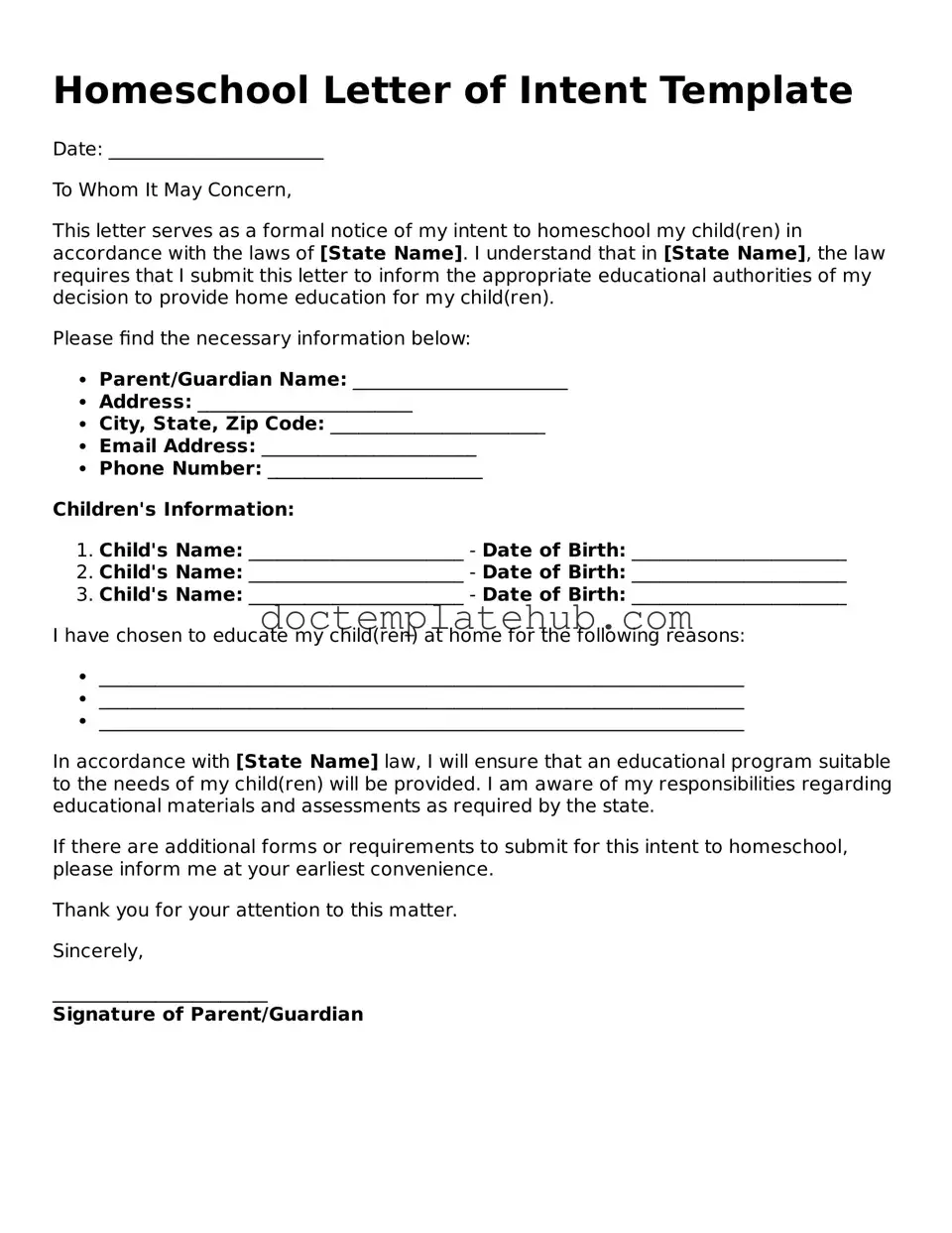What is a Homeschool Letter of Intent?
A Homeschool Letter of Intent is a document that parents or guardians submit to their local school district to formally notify them of their decision to homeschool their children. This letter serves as an official declaration of intent and outlines the parents’ commitment to providing an educational experience outside of the traditional school system.
Do I need to file a Homeschool Letter of Intent every year?
In most states, parents must file a Homeschool Letter of Intent at the beginning of each school year. However, some states may have different requirements. It is essential to check the specific regulations in your state to ensure compliance with local laws.
What information should be included in the Letter of Intent?
The Letter of Intent typically includes the name and address of the parent or guardian, the names and ages of the children being homeschooled, and a statement expressing the intent to provide homeschooling. Some states may require additional details, such as educational plans or curriculum outlines, so it's important to review state requirements.
Where do I submit the Homeschool Letter of Intent?
The Letter of Intent should be submitted to the local school district office. Many districts allow for electronic submission, while others may require a physical copy. Confirm the submission process with your local education authority to ensure that your letter is received and processed correctly.
What happens after I submit the Letter of Intent?
After submission, the school district may acknowledge receipt of your Letter of Intent. Some districts may also require additional documentation or follow-up, such as an educational plan or assessment reports. Be prepared to respond to any requests for further information.
Can I withdraw my child from public school after submitting the Letter of Intent?
Yes, once you submit the Letter of Intent, you can withdraw your child from public school. However, it is advisable to check with the school to understand their specific withdrawal process. This ensures that you follow the proper steps and avoid any issues related to attendance records.
What if I change my mind about homeschooling?
If you decide to discontinue homeschooling, you can re-enroll your child in a public or private school. It is a good idea to communicate with the school district about your decision and follow their re-enrollment process. This will help ensure a smooth transition back into the traditional education system.
